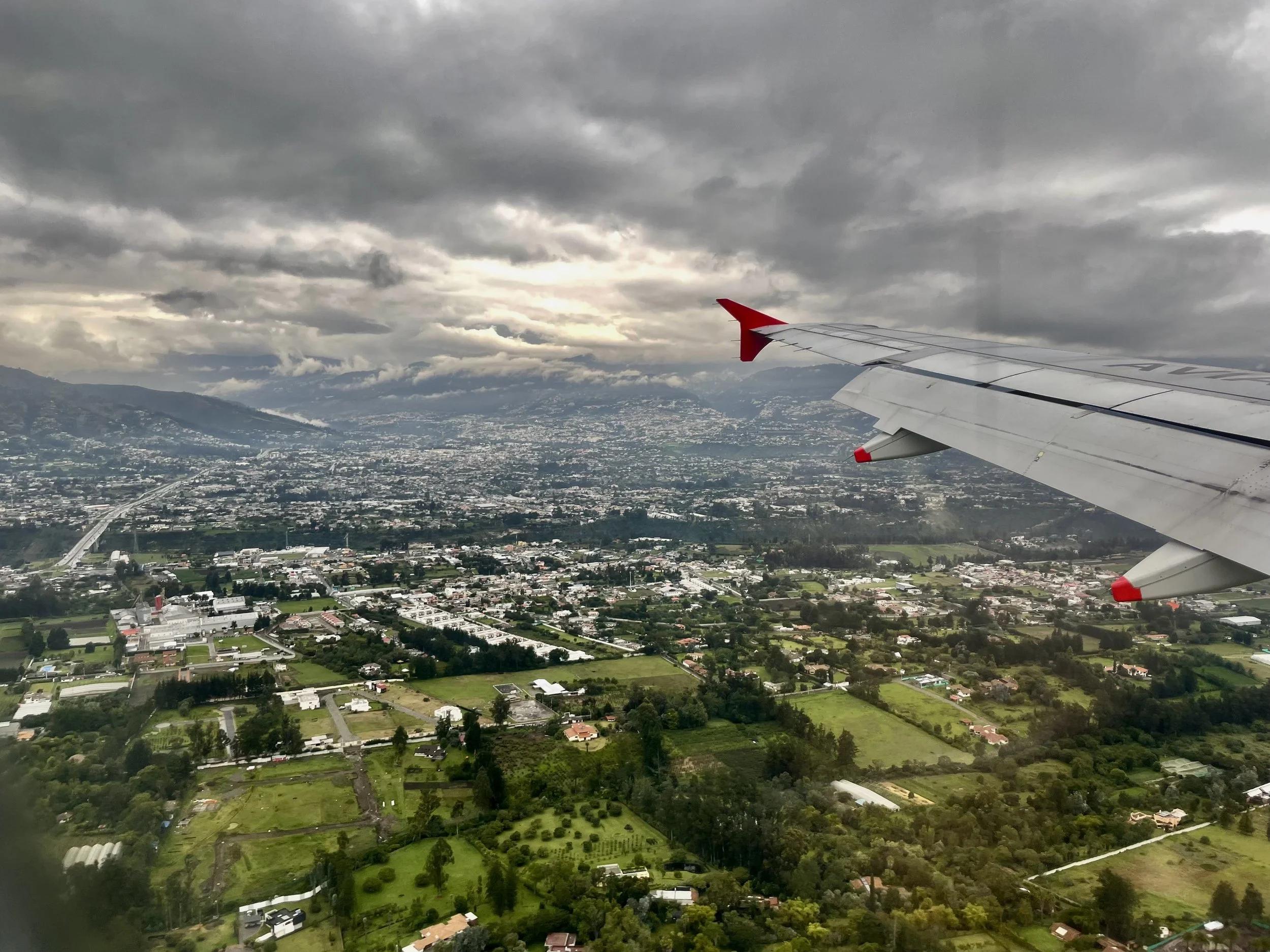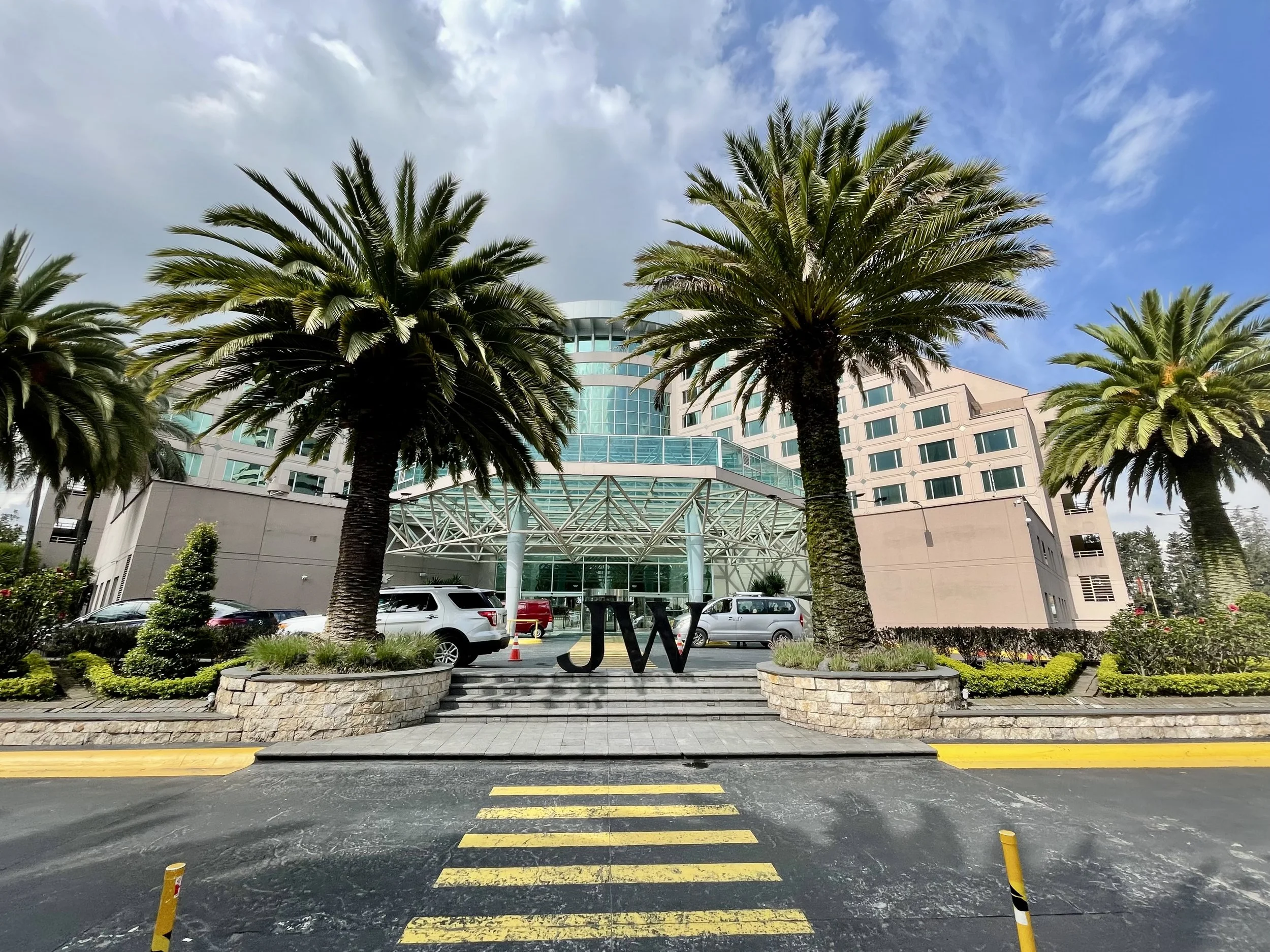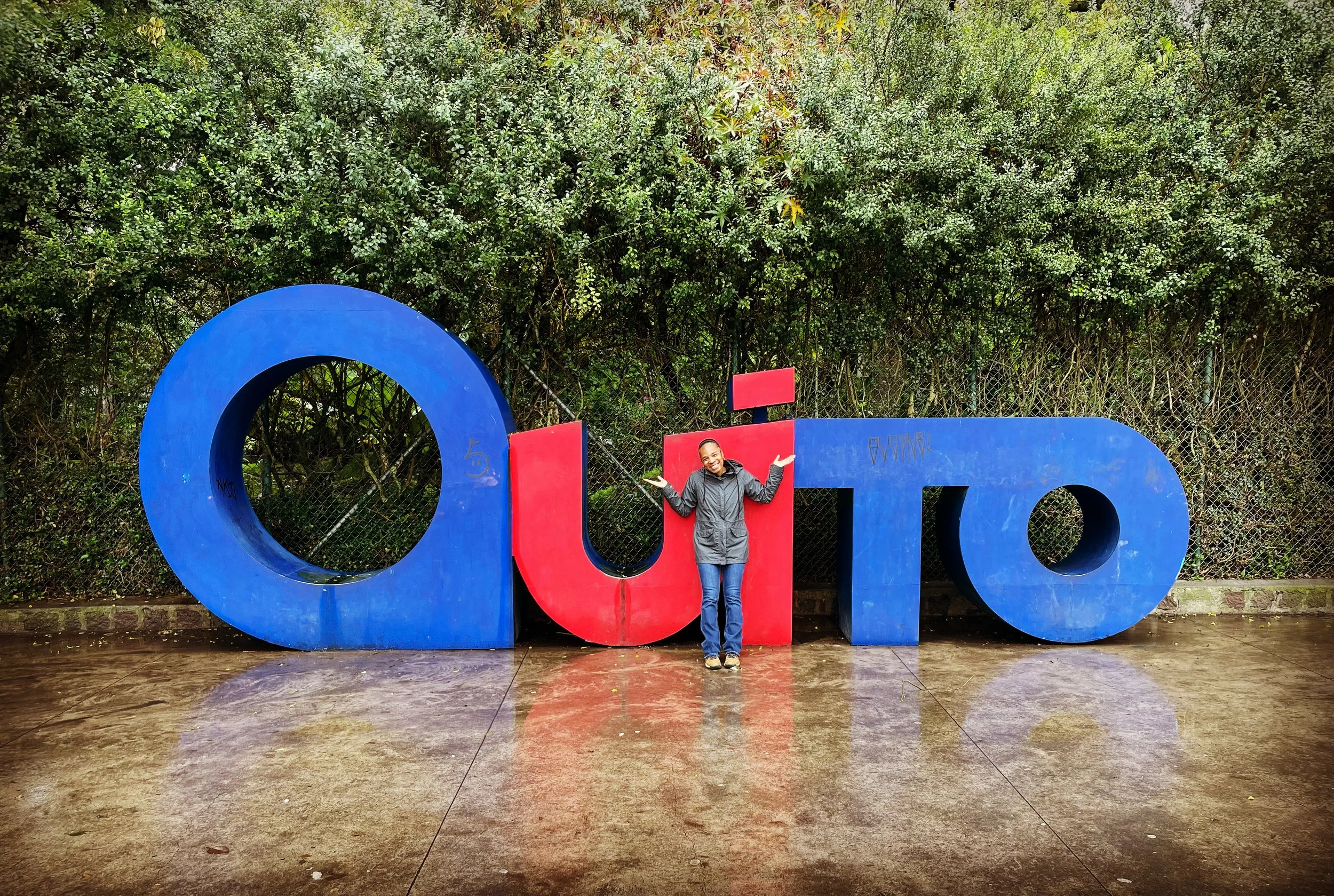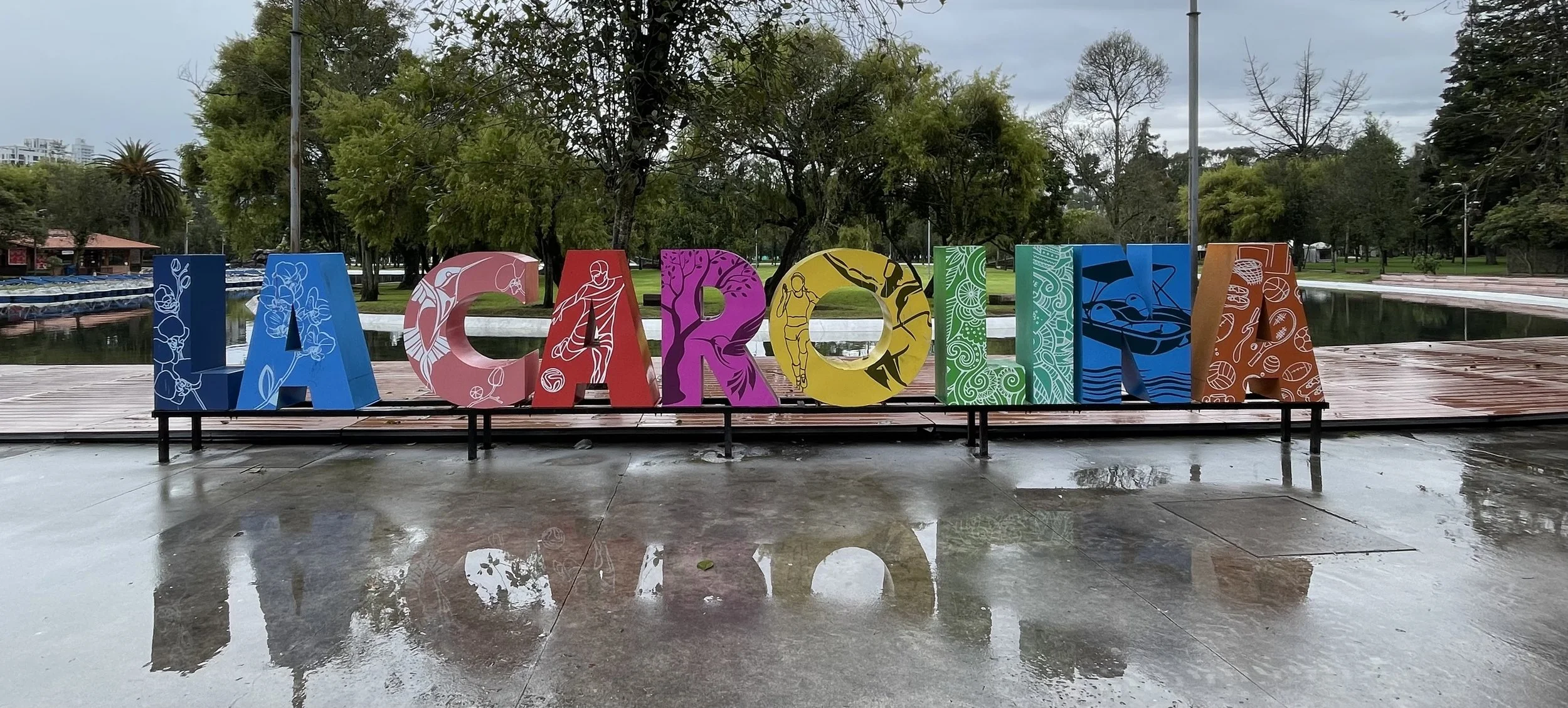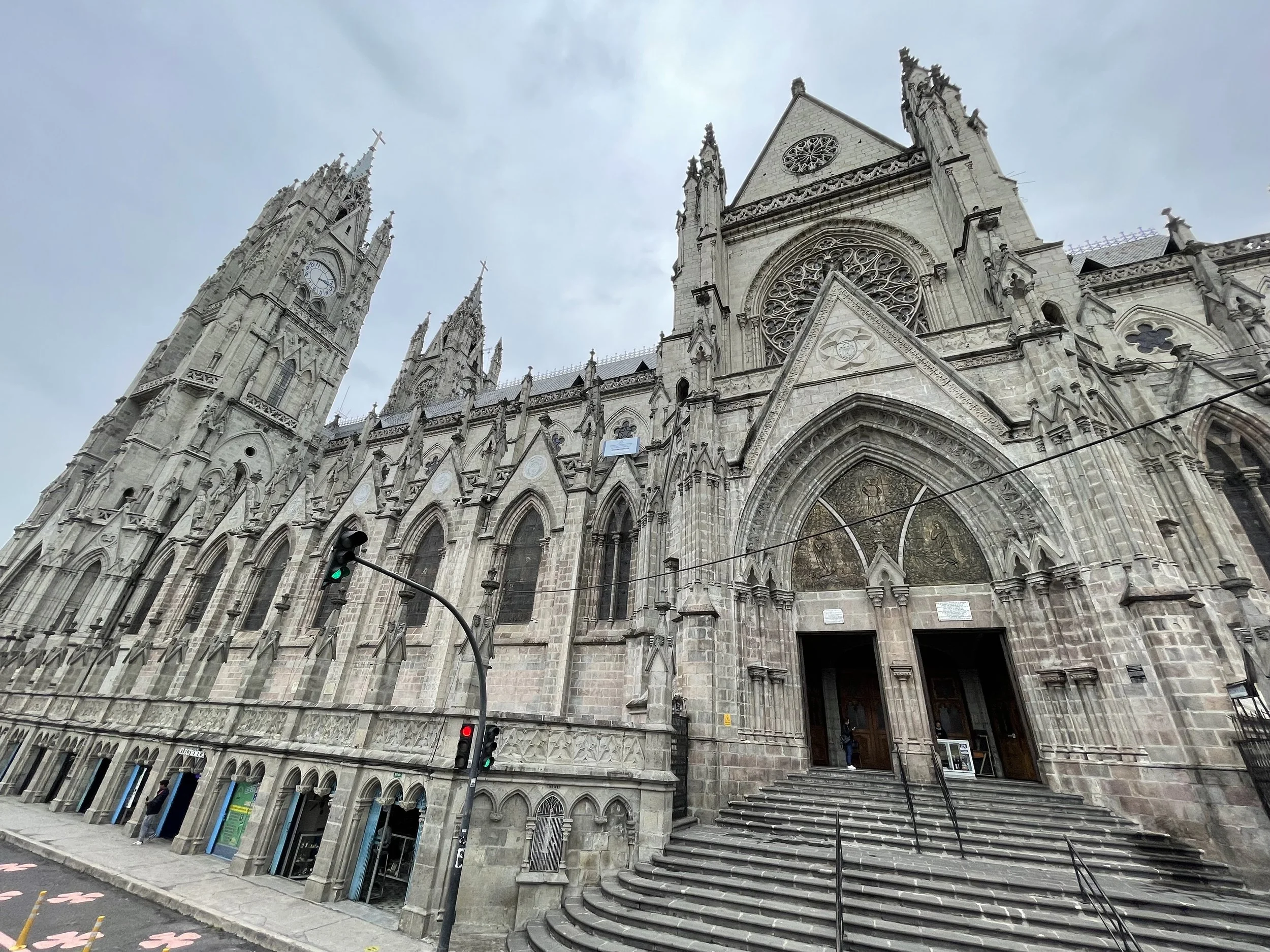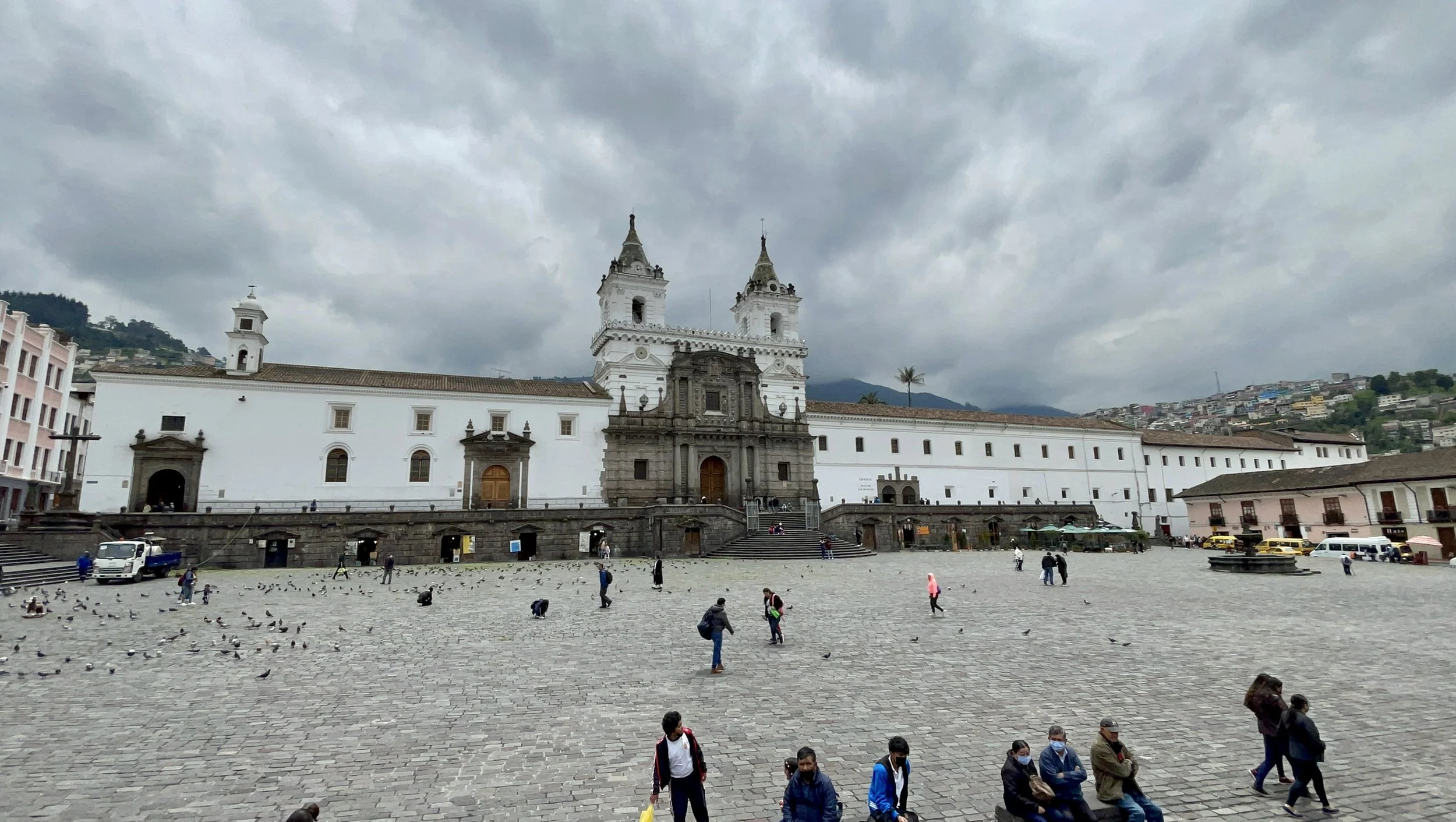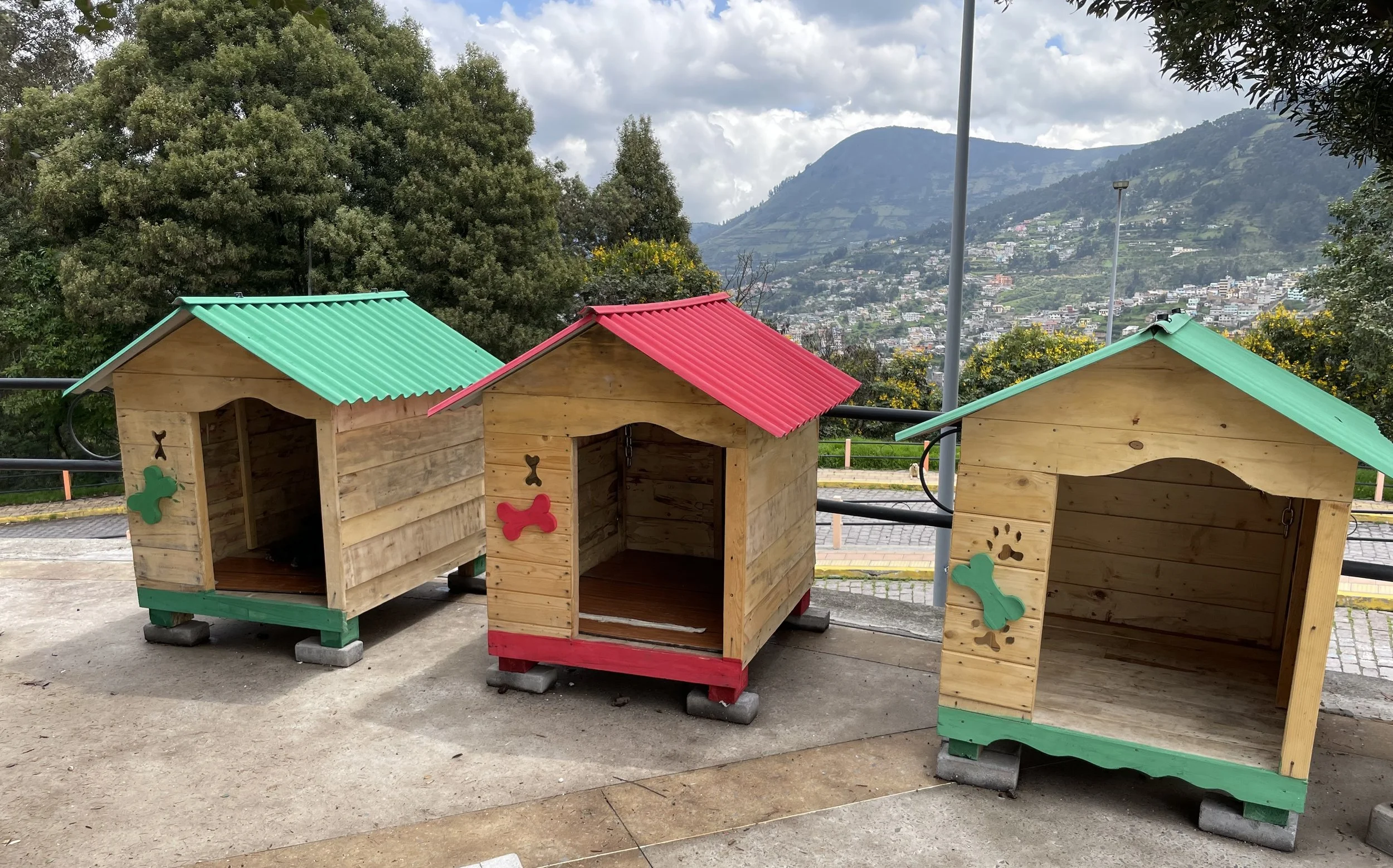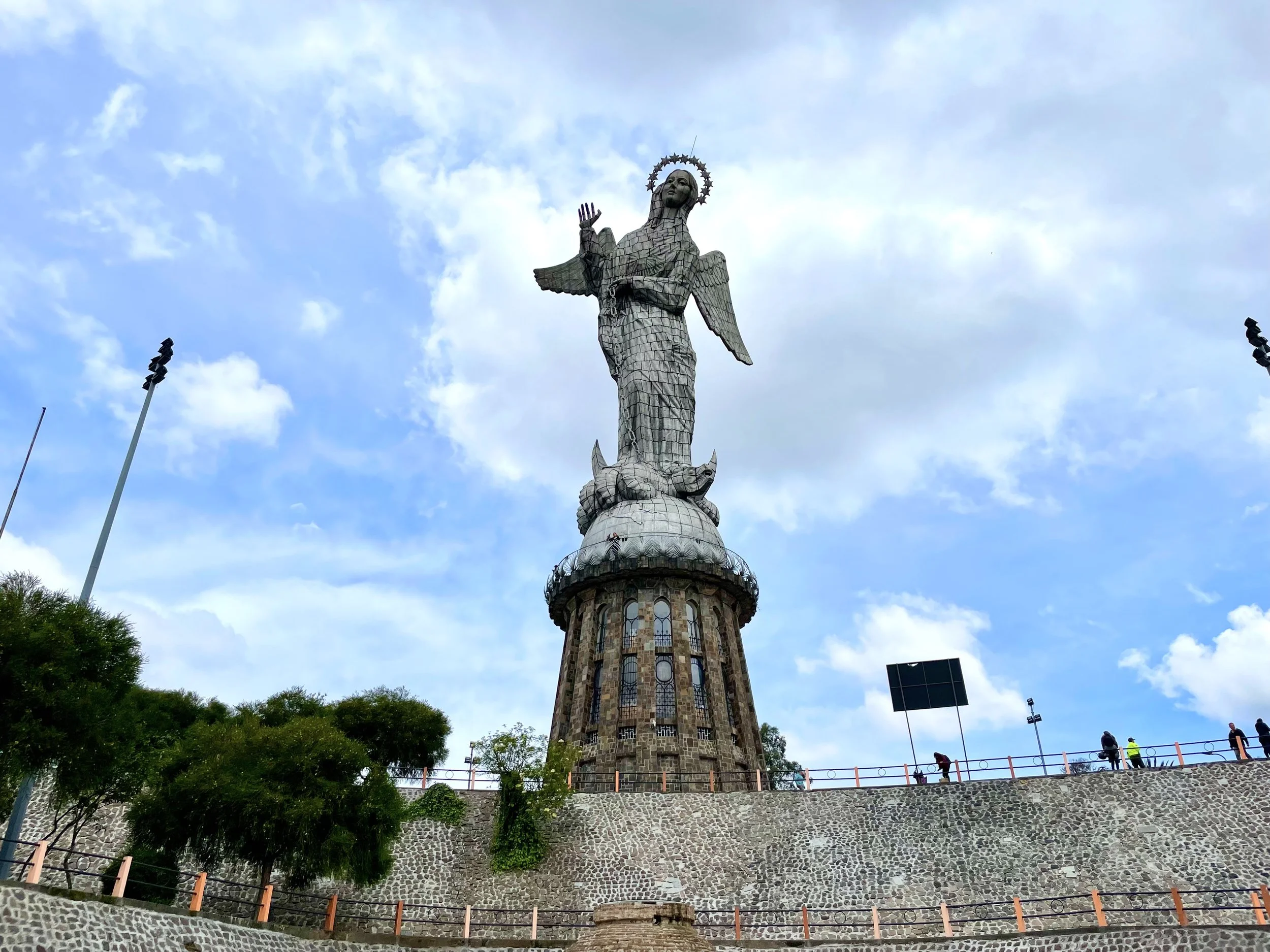One Day In Quito Ecuador
Departing Bogota
Arriving Quito
Arrival:
I arrived in Quito on a rainy April afternoon, flying with Avianca Airlines from El Dorado International Airport in Bogotá, Colombia, to Mariscal Sucre International Airport (UIO) in Quito. After clearing customs and collecting my luggage, I made my way to the hotel. The drive took about 45-50 minutes, offering a glimpse of the city’s landscape along the way.
Local Currency:
Quito, like the rest of Ecuador, uses the United States Dollar (USD) as its official currency. Ecuador adopted the dollar in 2000, and it's the primary currency for all transactions. Ecuador also uses centavo coins (1, 5, 10, 25, and 50 cents), as well as standard U.S. dollar coins.
JW Marriott Quito
Where I Stayed:
I stayed at the JW Marriott Hotel Quito, a 5-star hotel right in the heart of the city. The hotel is ideally located at the intersection of Avenida Orellana 1172 and Avenida Amazonas, offering easy access to popular attractions like Santo Domingo Church and the House of Ecuadorian Culture.
The hotel boasts 259 rooms and suites, each designed with modern amenities such as plush bedding, plasma TVs, minibars, and stunning city views. Guests can enjoy a variety of dining options, including:
Bistro Latino: Serving international cuisine for breakfast and lunch.
La Hacienda Grill: Specializing in steak and seafood.
Café Gourmet and Exchange Bar: Great spots for drinks and coffee.
The Zumay Health Club provides relaxation options, including Turkish baths, a sauna, hot tubs, and a well-equipped fitness center. There's also an outdoor swimming pool with panoramic views of the city.
Unfortunately, due to my late arrival, tiredness, and the rainy weather, I didn't get to fully explore the hotel's amenities. However, I did appreciate the wallet-sized information card provided by the hotel, which warned guests about common scams to watch out for while exploring the city.
Getting Around:
Walking was my primary mode of transportation while in Quito. I used taxis to get to and from the airport and took buses to visit key tourist attractions, but I mostly walked around the city to absorb the local atmosphere.
However, for those who prefer alternatives, Quito offers various options:
Public Transport:
Trolebus: A popular electric bus system covering important neighborhoods.
Ecovía: Another bus system that serves the eastern part of the city.
Regular Buses: Extensive, but can get crowded during rush hours.
Taxis & Ridesharing:
Taxis are abundant, but it's best to ensure the meter is used or agree on the price upfront. Ridesharing services like Uber and Cabify are widely used and often safer.Bicycles:
Quito is becoming more bike-friendly, with rental stations like BiciQuito. There are bike lanes, especially along Avenida de los Shyris.Cable Cars:
Teleférico is a must-do to reach Pichincha Volcano, offering incredible city views.Private Car or Rentals:
If you're planning to explore outside the city, renting a car gives you more flexibility.Mototaxis:
These small motorcycle taxis are cheaper but not the safest option, typically for short trips.Tourist Shuttles:
Shuttle buses are available for popular attractions like Mitad del Mundo and Teleférico.
Pro Tips:
Prioritize safety when using taxis or ridesharing services, especially at night.
Download maps or transportation apps to navigate public transport.
Quito sits at a high altitude (2850m/9350ft), so take it slow and hydrate to avoid altitude sickness.
What I Did:
I walked a lot, making the most of my one full day in Quito. I started my day early, strolling from the hotel through Parque La Carolina, one of Quito’s largest parks. The park offers numerous activities, including picnics, visits to the Botanical Garden, climbing the Cerro (hill) for a great city view, or exploring the Planetarium and El Árbol de la Vida sculpture.
Given the wet weather and early hour, the park was relatively quiet. I also spotted Quicentro Mall across from the park and decided to pop in. Inside, I found an expansive shopping and dining space. Although I didn’t need a backpack, I ended up buying one anyway—because, who doesn't love a new travel accessory?
Around 11:15 a.m., I hopped on the Quito City Tour Double Decker Bus. It seemed like the quickest way to see the city's top sights. The $15 ticket gave me access to 11 stops, and a guide provided interesting commentary along the way. Here are the highlights:
Parque El Ejido: The starting point of the tour.
La Mariscal (Plaza Foch): A lively neighborhood with great dining and nightlife.
Parque La Carolina: Where I boarded the bus, a large park with various activities.
Museo Nacional (National Museum): A museum housing Ecuadorian art and artifacts.
Centro Histórico: Quito’s UNESCO-listed old town with historic churches, plazas, and colonial buildings.
Panecillo Hill: Offering stunning views of the city and the Virgin of El Panecillo statue. I also noticed several stray dogs, which seemed to be part of the hill's charm.
La Ronda: A historic street filled with cafes, restaurants, and artisan shops.
Mitad del Mundo: The iconic stop at the Mitad del Mundo Monument, marking the equator. I didn't have time to visit this one, but it’s definitely on my list for next time.
Teleférico (Cable Car): The cable car ride offers panoramic views of Quito and the surrounding mountains, including Pichincha Volcano.
Basilica del Voto Nacional: One of the largest churches in Ecuador, known for its Gothic architecture and views of the city from its towers.
Plaza Grande: The historic square, surrounded by important buildings like the Presidential Palace and Archbishop’s Palace.
It was a packed, fun day in Quito. I ended the day early as I had an early departure to the Galápagos Islands the next day!



